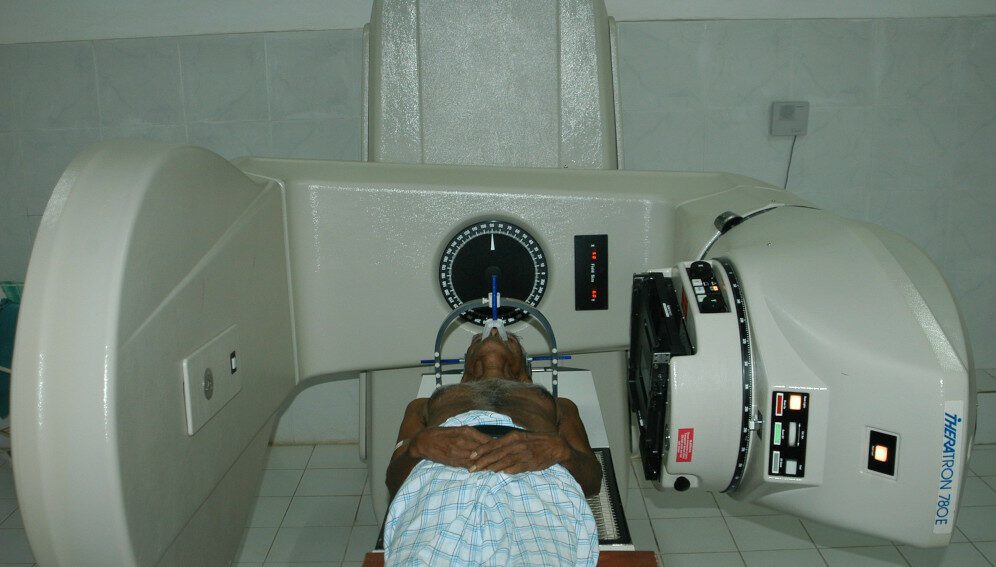21/03/22
Q&A: Tech can ‘offset’ cancer gaps – AstraZeneca chief

Send to a friend
The details you provide on this page will not be used to send unsolicited email, and will not be sold to a 3rd party. See privacy policy.
Seventy per cent of nearly 10 million cancer-related deaths in 2020 occurred in low-and middle-income countries, according to the World Health Organization. And the cancer mortality rate in these countries is likely underestimated because many countries lack adequate cancer registries and reporting systems.
Meanwhile, the price of cancer treatments has been steadily increasing during the past decade, decreasing their availability and affordability for many cancer patients in the global South.
Ti Hwei How, vice president of international oncology at UK-based pharmaceutical giant AstraZeneca, says technology can be harnessed to help diagnose people more efficiently and “offset” some of the resource gaps in poorer countries.
Earlier this month, at the postponed Expo 2020 Dubai, AstraZeneca launched Accelerating Change Together (ACT) for Cancer Care, a global coalition to advance cancer treatment and diagnosis worldwide. SciDev.Net spoke to How about how the initiative will address cancer care challenges in low- and middle-income countries.
What are the main aims of the newly formed coalition?
The bold ambition that we have is to eliminate cancer as a cause of death. We develop life-changing medicines but we need to understand that the treatment of cancer or any other disease should not be focused only on the treatment itself, but on the end-to-end journey. It starts with the awareness component: are people aware of the disease? Then there is screening and diagnosis and treatment…and so on.
What we want to do is to get a coalition of partners that includes both the private sector like ourselves, but also academics and the public sector. When we team up with multiple stakeholders to look across what we call the patient journey, we will be able to identify the main barriers and provide adequate solutions
Were you able to sign any partners from private or public sectors in low- and middle-income countries?
We’re just kicking off this particular journey right now at the Expo, and the partners that were able to get together for this time to start the journey include G42 Healthcare [an Abu Dhabi-based health-tech company].
“In many cancer types, we are progressively reaching the goal of being able to potentially eliminate cancer as a cause of death.”
Ti Hwei How, vice president of international oncology, AstraZeneca
We have the health minister of Kenya joining us for one of the panels at the Expo. So, there are potential targets that we are reaching out to. We haven’t been able to sign any [memorandum of understanding] with other partners, but let’s say that the conversations are ongoing to enroll as many partners as possible.
Can we summarise cancer care challenges in low- and middle-income countries by “lack of resources”, or there is more to it than meets the eye?
There are challenges across different spectrums. Firstly, there is potentially a lack of awareness. As a consequence of the lack of awareness, there is some stigma associated with some cancer types. Secondly, screening and diagnosis are not available for many cancers in many low- and middle-income countries. Thirdly, the infrastructure for the treatment of cancers is also very often not available. In many African countries, there are only a handful of oncologists for millions of people within the country.
We don’t pretend to know all the answers. We don’t pretend to know where all the barriers lie, which is why it’s so important for us to engage multiple stakeholders, so we could identify the main problems…before we start jumping and trying to provide solutions.
How can low- and middle-income countries adopt advanced cancer diagnostic technology, despite the costs?
Technology can potentially address some of the resource capabilities and challenges that many low- and middle-income countries have. So, X-rays are quite widely available in most countries in the world. But are there enough pathologists? And do they have enough time and resources to look through all those X-rays and potentially pick up lung nodules that may end up becoming cancer? We can deploy AI, for example, to help with that.
Prostate cancer is another big challenge for many African countries. What we have been able to do is to partner with a company that was able to provide the screening test — we call it a PSA (prostate-specific antigen) test — for about US$2. So, by leveraging the technology to push the cost down, you’re able to screen more people, and if you pick up the cancers early they are more treatable.
Are there enough trained professionals who can handle this technology?
If you deploy technology smartly, you are actually able to reduce the manpower. Going back to the AI example, of course we need to train more people who can use the software, but it’s just a computer software, and then the computer or the software takes over the challenge of reading hundreds and thousands of the X-rays.
Another example is a diagnostic machine developed by a molecular diagnostic company that we’ve been partnering with. This machine can take lung cancer biopsies and finish all the needed preparatory steps before the sample could be fed to a [polymerase chain reaction] PCR machine for diagnosis.
The increasing cost of cancer treatment is making it unaffordable for many patients, especially in low- and middle-income countries. How will the new coalition address this, and improve pricing transparency?
In many cancer types, we are progressively reaching the goal of being able to potentially eliminate cancer as a cause of death. So, the value of our medicines needs to reflect the innovation and the benefit that it brings. At the same time, we do recognise that there are economic disparities between different markets and, therefore, there is a need for potentially differentiated value proposition for different markets.
Secondly, many of our cancer medicines do not become suddenly obsolete when their patents expire. They get commercialised by many local manufacturers to benefit many patients around the world.
Moreover, the cost of the drug may not even be the issue if the infrastructure doesn’t exist. So, I acknowledge the point that the cost of medicines needs to be taken into consideration, but at the same time, it shouldn’t be looked at in isolation.
This piece was produced by SciDev.Net’s Global desk and edited for clarity and brevity.















